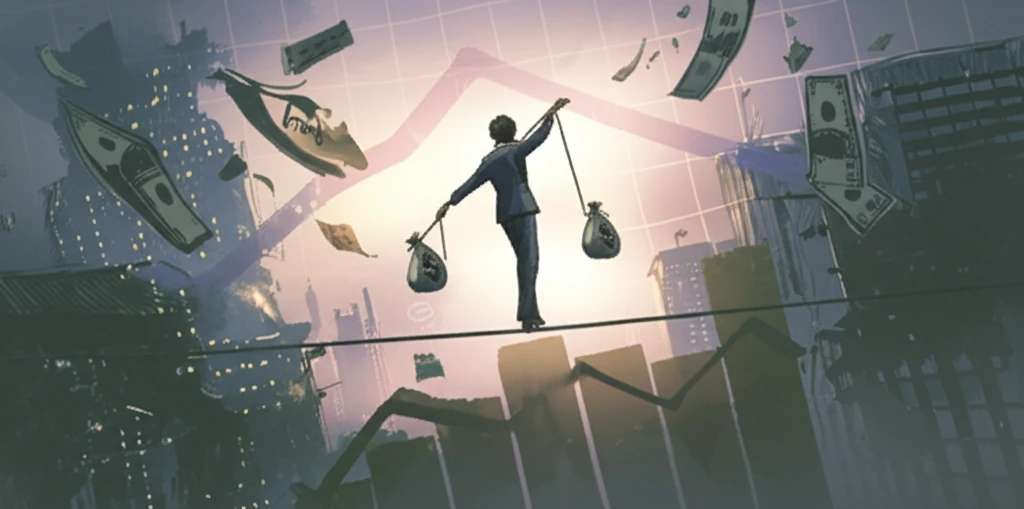
Decoding Risk: How State-Dependent Models are Changing Finance
"Move over traditional risk assessments! A new wave of models is here to help better manage investments and understand financial stability."
In today's fast-paced financial world, understanding and managing risk is more critical than ever. Traditional risk models often fall short because they fail to account for the dynamic nature of real-world financial environments. Companies, especially those in innovative sectors like technology, experience fluctuating revenues and costs that traditional models simply can't capture. This is where state-dependent dual risk models come into play, offering a more nuanced and adaptive approach to financial risk management.
Imagine a venture capital firm investing in cutting-edge research and development. The firm's wealth isn't just about constant costs and occasional profits. It's a complex interplay of ongoing expenses and unpredictable breakthroughs. Traditional dual-risk models, which often assume constant costs and profits following a simple Poisson model, lack the sophistication to reflect this reality. State-dependent models, however, allow for both the arrival rate of profits and the magnitude of costs to vary based on the company's current financial state, offering a more realistic picture of financial health.
This article delves into the world of state-dependent dual risk models, exploring how they improve upon traditional methods and provide a more accurate framework for assessing financial risk. We'll break down the key concepts, discuss real-world applications, and show why these models are becoming increasingly essential for navigating the complexities of modern finance. Whether you're an investor, a finance professional, or simply curious about the future of risk management, this guide will provide valuable insights into this evolving field.
Why Traditional Risk Models Fall Short: A Need for Dynamic Assessment

Traditional risk models, while foundational, often operate under simplifying assumptions that don't hold up in dynamic environments. For instance, many models assume a constant cost structure and treat profits as a simple, random process. This approach overlooks several critical factors:
- Ignoring Self-Exciting Phenomena: Breakthroughs often pave the way for further innovations. Traditional models typically treat profit arrivals as independent events, failing to capture this crucial aspect.
- Static Cost Assumptions: Expenses for research and development, marketing, and operations can vary significantly based on a company's performance and market conditions. Fixed-cost assumptions miss this critical dynamic.
- Oversimplification of Profit Arrival: Treating profit arrival as a basic Poisson process overlooks the fact that a company's capacity to innovate and generate profits often depends on its current financial standing.
Embracing the Future of Risk Management
State-dependent dual risk models represent a significant advancement in how we understand and manage financial risk. By moving beyond the limitations of traditional models, they provide a more adaptive and realistic framework for assessing the financial health of companies, especially those operating in dynamic and innovative sectors. As the financial landscape continues to evolve, embracing these sophisticated models will be crucial for making informed investment decisions and navigating the complexities of the modern economy. From venture capitalists seeking the next breakthrough to established companies strategizing for sustainable growth, state-dependent dual risk models offer a powerful tool for understanding and mitigating risk in an ever-changing world.
